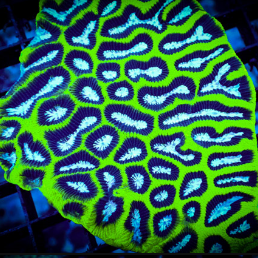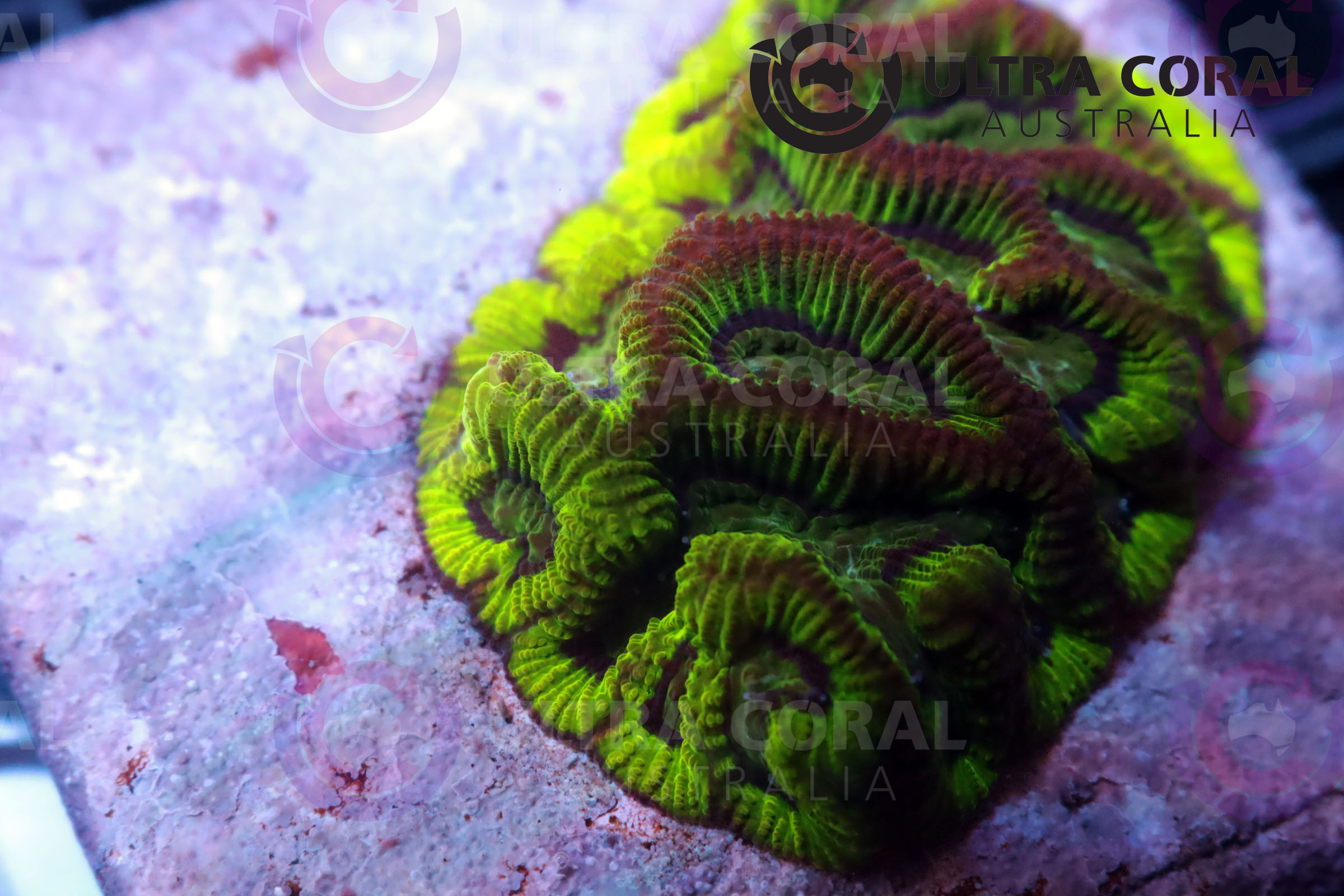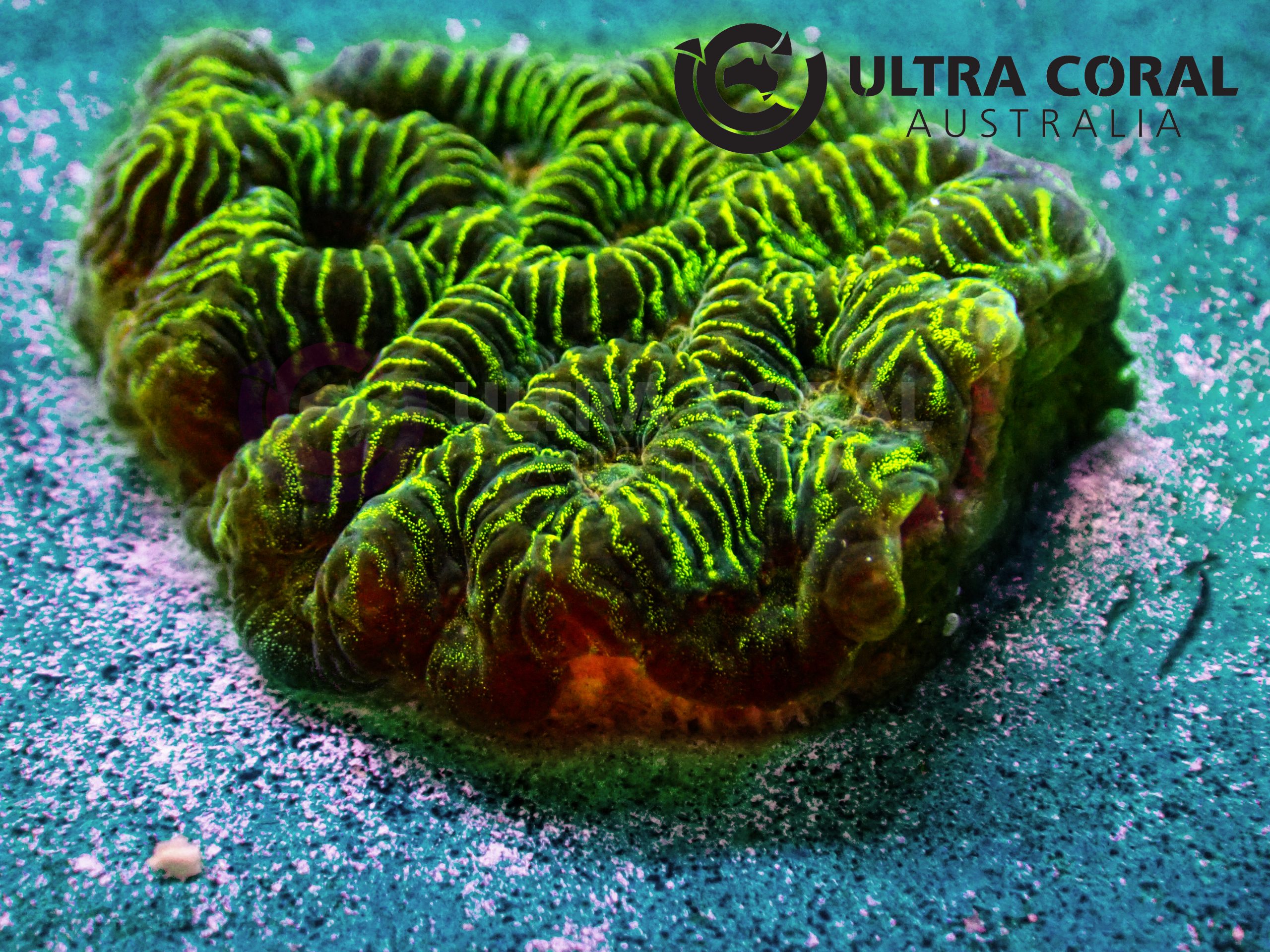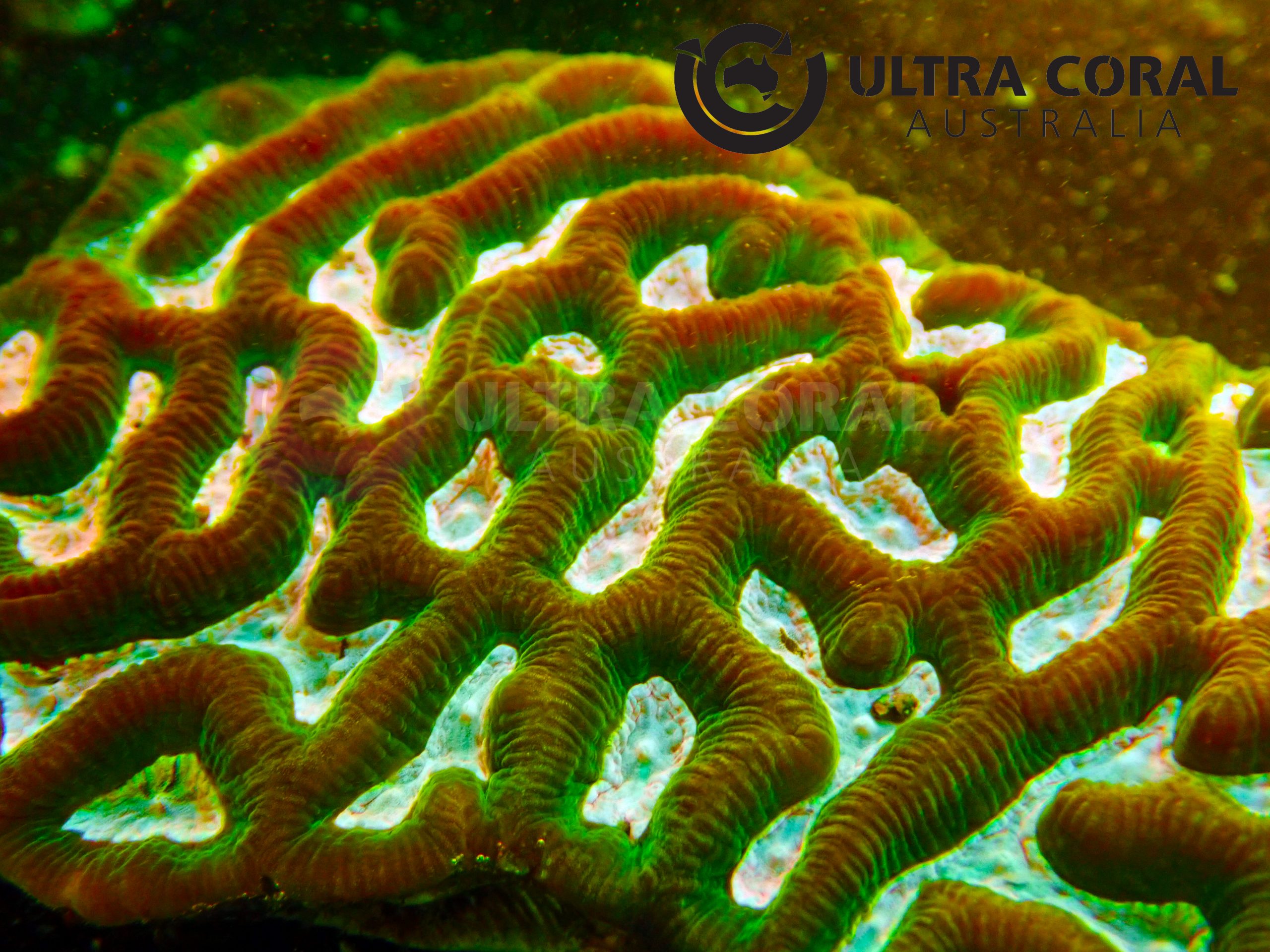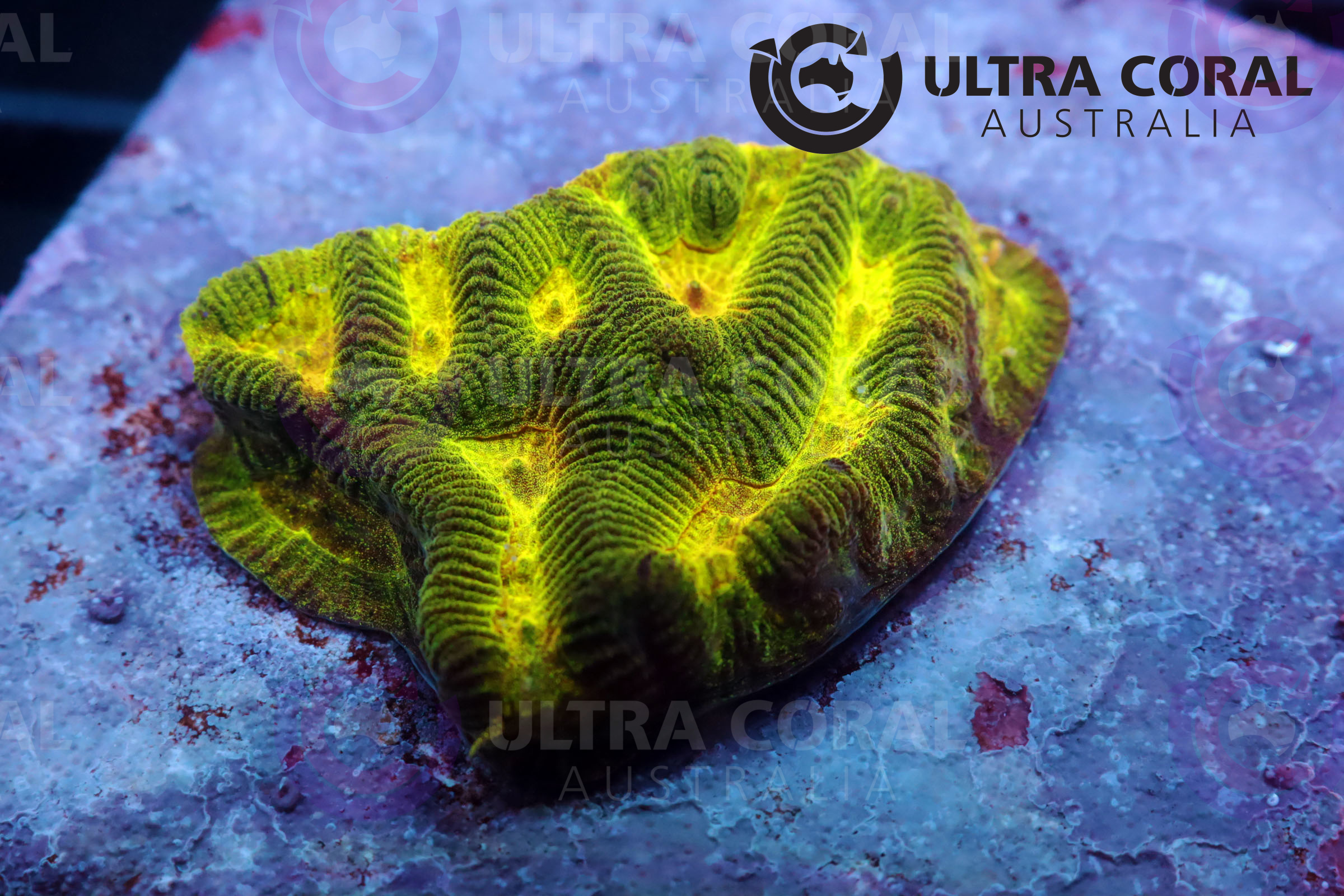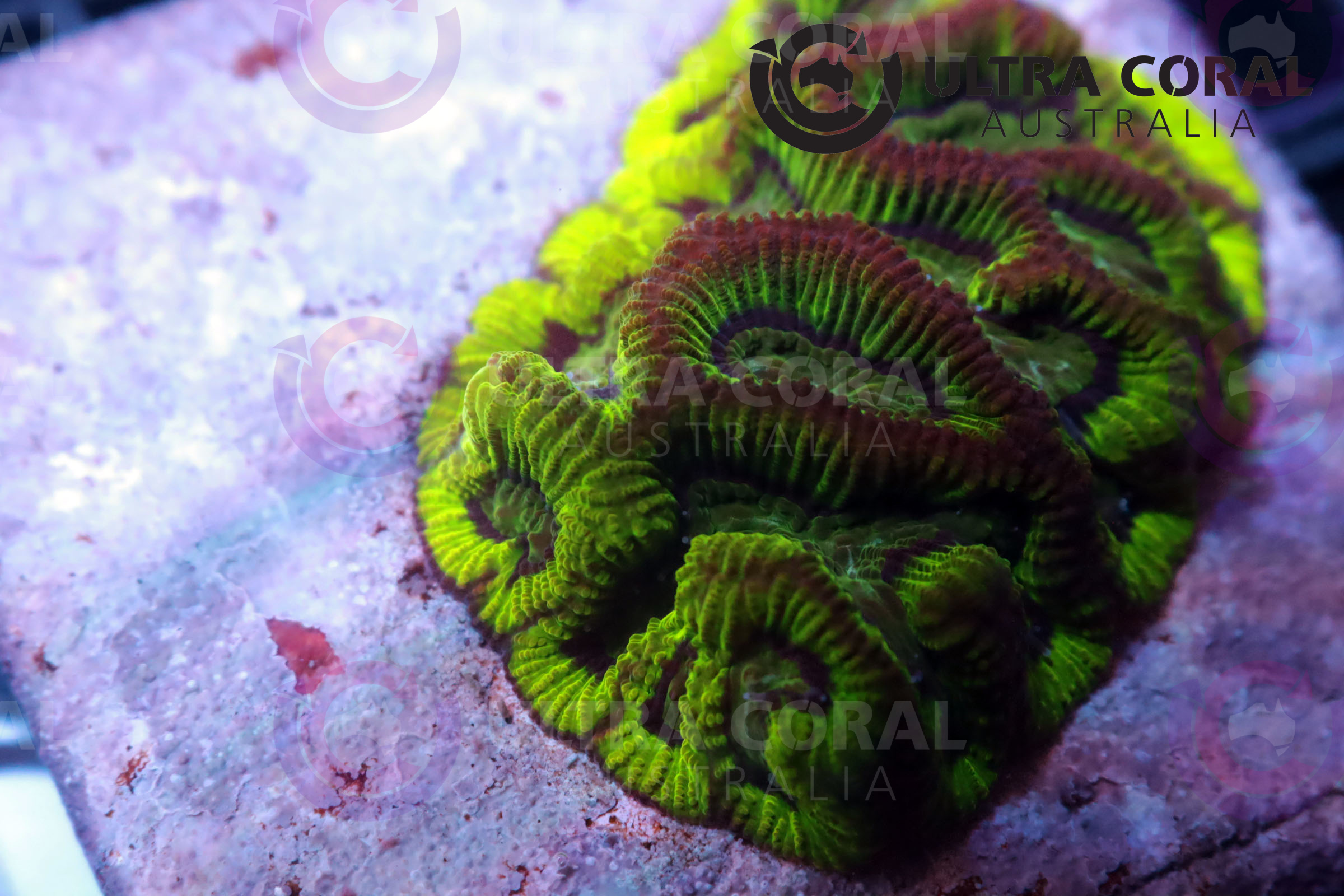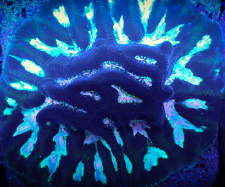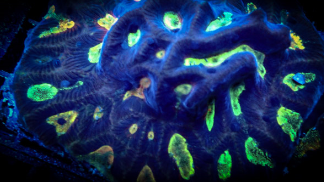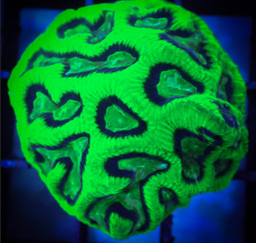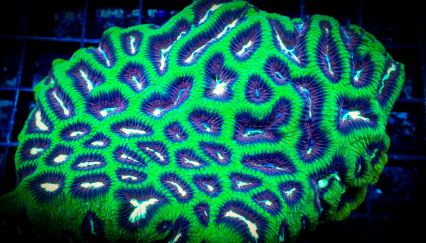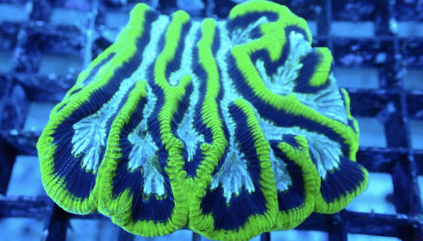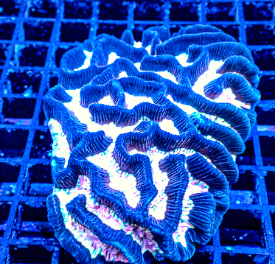Platygyra sp.

The Platygyra Coral, often referred to as the Brain Coral or Maze Coral, is a remarkable large polyp stony (LPS) coral. Known for its intricate maze-like patterns and vibrant colors, it’s a truly stunning addition to any reef aquarium.? This corals appearance can be described by the genus name in Greek words; Platy meaning flat and Gyros meaning wide circle.
Platygyra colonies are normally massive and either flat or dome-shaped. The skeleton walls are shared between multiple polyps which twist and turn throughout the coral forming maze-like valleys. These valleys can be irregular in length and shape, even within the same colony.
Platygyra can be seen in shades of grey, green, purple, yellow, pink, peach and brown with contrasting valleys. In the wild, Platygyra is found growing in shallow reef environments.
Platygyra is also identified as a semi-aggressive coral species extending sweeper tentacles at night.? Caring for Platygyra corals involves providing them with low to moderate lighting and water flow5. They can be placed either on the bottom of the tank or on the rockwork, depending on the specific lighting and flow conditions of the aquarium
Platygyra corals are carnivorous and appreciate regular feedings of small, meaty foods like mysis shrimp, brine shrimp, or finely chopped marine flesh7. They also benefit from supplemental feedings of phytoplankton and zooplankton
While generally hardy, these corals can be sensitive to sudden changes in water parameters. Regular water changes, monitoring of water chemistry, and proper acclimation are crucial for their health and wellbeing
Basic Water Parameters
pH
8.0 to 8.3
Salinity
34 - 36ppt
Temperature
24.0 - 26.0 Celsius
Husbandry Requirements
Lighiting
110-175 PAR
Flow
Some turbulence required
Aggressiveness
Has sweeper tentacles and/or an ability to sting some other corals.
Acclimation Guide
- It is highly recommended to acclimate all corals to a new environment to prevent shocking corals.
- Place the corals in the water from the packing bags and slowly add the water from new environment (Dripping method is recommended).
- Use the water parameter above as a guide.
- When the vessel becomes full , replace the water with the new environment water by a small amount at a time.
- Ensure the water temperature matches with the new environment’s water.
- After the corals have spent adequate time in the acclimation water, gently place the corals to a new environment.
- It is recommended to place new corals under lower light intensity than usually required. Once corals show no signs of stress, it can be moved to higher lighting area gradually.”

